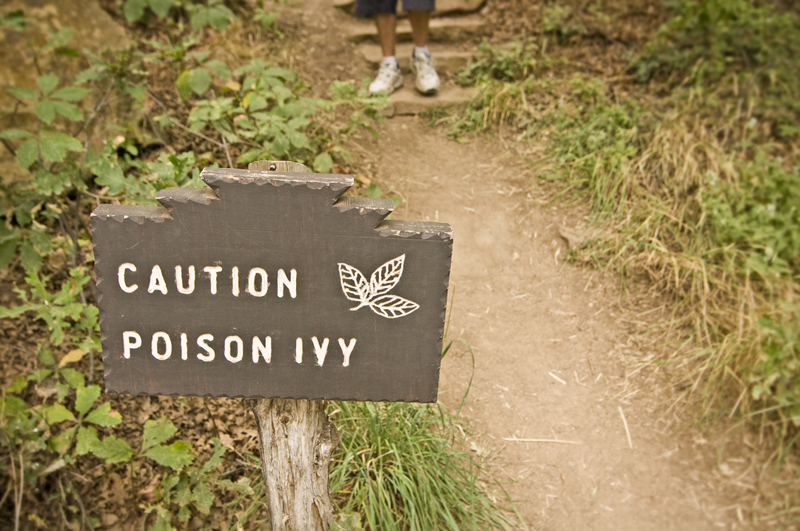Keep Your Lawn Lush: Tips for Avoiding Drought Damage This Summer
The heat of summer can bring more than just backyard fun and sunshine--it can also pose significant challenges for maintaining healthy, green grass. If you're determined to avoid drought stress on your lawn this season, understanding proper lawn care strategies is essential. In this comprehensive guide, we'll reveal expert tips to help you keep your lawn lush and resilient during the hottest, driest months of the year.
Understanding Summer Drought and Its Impact on Lawns
As temperatures soar, lawns can quickly become susceptible to drought damage. But what exactly is drought damage? When your turf receives less water than it needs, grass blades wilt, turn brown or yellow, and may even die off in patches. Not only does drought stress impact the visual appeal of your yard, but it can also weaken grass roots, making your lawn more vulnerable to pests and weeds.
- Grass type matters: Some species, like Bermuda or Buffalo grass, handle drought conditions better than others (such as Kentucky bluegrass or fescues).
- Soil composition: Sandy soils drain faster and retain less water, increasing drought risk, while clay soils hold more moisture but may cause other issues if overwatered.
- Sun exposure: Lawns in full sun suffer more heat stress than those in partial shade.
Being proactive and intentional with summer lawn care protects your grass from the harmful effects of drought and heat.

1. Water Wisely for a Drought-Resistant Lawn
Water is the lifeline of any lush, healthy lawn, but efficient irrigation is crucial during the summer. Mindless watering can do more harm than good--overwatering can encourage shallow roots, while underwatering leads to rapid drought damage.
Best Practices for Watering Your Lawn in Summer
- Water deeply and less frequently: Encourage your grass to develop strong, deep roots by providing a thorough soak one to two times weekly. Aim for 1 to 1.5 inches per week, including rainfall.
- Water early in the morning: Early hours (before 9 a.m.) reduce evaporation, giving water time to soak in.
- Use a rain gauge: This helps monitor precipitation and prevent unnecessary watering.
- Adjust your irrigation system: Ensure sprinkler heads are functioning efficiently and aimed at your lawn, not the sidewalk.
- Test soil moisture: Push a screwdriver into the ground--if it enters easily six inches deep, your soil is well-watered.
Applying these tips can substantially lower your risk of lawn drought damage and save water at the same time.
2. Mow High and Smart
Many homeowners unwittingly expose their lawns to drought stress by mowing too short. But mowing higher is one of the simplest ways to create a drought-tolerant lawn.
Why Mowing Height Matters for Drought Resistance
- Taller grass provides shade: This helps cool the soil and reduces water loss through evaporation.
- Promotes deep roots: Longer grass blades support deeper root systems that can access water stored further underground.
- Less stress on the lawn: Mowing too short (scalping) increases vulnerability to drought, weeds, and disease.
Tip: Set your mower to the highest recommended setting for your grass type, generally between 3 to 4 inches for cool-season grasses and about 2 to 2.5 inches for most warm-season varieties.
3. Aerate and Amend the Soil
Compacted soil restricts the flow of water, air, and nutrients to the root zone, making grass more susceptible to drought damage. Aerating your lawn promotes vigorous growth and drought resilience.
Benefits of Lawn Aeration in Summer
- Improves water absorption: Aeration breaks up compacted soil, allowing water to penetrate deeper where roots can access it.
- Reduces thatch buildup: Aeration helps decompose thatch that can otherwise block water from reaching the soil.
- Supports healthy microbial activity: Oxygen-rich soil encourages beneficial microbes that support robust, drought-tolerant grass.
*For best results, aerate your lawn in late spring or early summer, just before the heat intensifies. If your soil is especially poor or sandy, consider amending it with organic matter like compost to further enhance its water-holding capacity and resilience.*
4. Choose Drought-Tolerant Grasses and Mixes
If you're establishing a new lawn or overseeding thin patches, selecting drought-resistant grass varieties can make all the difference. These types of grass require less water and bounce back more quickly from dry periods.
Popular Warm-Season and Cool-Season Drought-Resistant Grasses
- Bermuda Grass: Highly drought-tolerant, ideal for hot, sunny climates.
- Zoysia Grass: Dense and tough, resists heat and foot traffic.
- Buffalo Grass: A low-water native grass for open, sunny lawns.
- Tall Fescue: A cool-season choice with deep roots and good drought resistance.
- Fine Fescue Mixes: Include creeping red, chewings, and hard fescues--great for shaded or low-water lawns.
Whenever possible, ask your local garden center for seed or sod varieties best suited to your climate and soil for optimal summer drought protection.
5. Mulch Grass Clippings or Add Organic Mulch
Mulching, whether you return grass clippings or use organic materials like shredded leaves, is one of the most effective forms of drought management for lawns.
The Power of Mulch Against Lawn Drought
- Conserves soil moisture: Mulch acts as a blanket, reducing surface evaporation.
- Regulates temperature: Keeps root zones cooler during heatwaves.
- Improves soil structure: Over time, organic mulches break down, building up drought-proof soil health.
- Saves time and fertilizer: Grass clippings supply up to 25% of your lawn's fertilizer needs.
Tip: Use your mower's mulching setting to return fine grass clippings to the lawn, or apply a light layer of compost or finely shredded leaves around the base of vulnerable areas.
6. Fertilize Appropriately for Drought Protection
Fertilizing provides critical nutrients but can do more harm than good if done at the wrong time or in excess during peak summer heat. Over-fertilizing stimulates tender new growth that struggles to survive drought.
Guidelines for Feeding Your Lawn Without Increasing Drought Stress
- Fertilize in spring or fall: These are the best seasons for most lawns to absorb nutrients without rapid dehydration.
- Utilize slow-release fertilizers: They provide a steady supply of nutrients, reducing the risk of burning and overstimulation.
- Avoid high-nitrogen formulas during drought: Excessive nitrogen can weaken drought resistance.
- Test your soil: Know which nutrients are lacking before applying fertilizer, and reduce or skip treatments during prolonged dry spells.
By optimizing fertilization, you enhance your turf's ability to thrive and survive hot, dry summers with minimal water.
7. Spot and Treat Drought-Stressed Lawn Areas Promptly
Quick action is crucial if you notice signs of drought stress in your lawn. Early intervention can often prevent the need for costly reseeding or restoration.
Key Signs of Summer Lawn Drought Damage to Watch For
- Bluish-gray tint to the turf or footprints that remain visible after walking across the lawn (loss of turgor pressure).
- Wilted, curly, or folded grass blades.
- Dry, yellow, or brown patches that don't rebound after watering.
- Cracked or hard soil surface.
How to Revive Drought-Stressed Grass
- Water deeply right away if your region is not under water restrictions. Give stressed areas an inch of water spread over two or three sessions (not all at once).
- Avoid heavy foot traffic on brown or wilting patches.
- Delay fertilizing until the lawn recovers moisture and shows signs of new growth.
- Reseed bare areas in early fall for cool-season lawns or late spring for warm-season lawns.
8. Adapt Your Lawn Maintenance to the Climate
If you live in an area with recurring summer dryness, consider making long-term changes that will reduce your lawn's water needs. These water-wise lawn care choices can transform your yard from a high-maintenance burden into a sustainable, resilient landscape.
Smart Landscaping Strategies for Drought-Prone Regions
- Shrink your turf footprint: Reduce lawn size and incorporate native groundcovers, mulched beds, or decorative rock gardens.
- Install efficient irrigation: Drip irrigation or smart sprinkler systems tailor water delivery based on real-time weather.
- Group plants by water needs: Keep drought-hardy grass and ornamentals together and far from thirsty trees or shrubs.
- Install rain barrels or cisterns: Collect roof water for deep, occasional watering.

Frequently Asked Questions About Preventing Summer Lawn Drought Damage
How often should I water my lawn during a heatwave?
During a heatwave, water deeply but no more than twice a week, always in the early morning. If your lawn is newly seeded, you may need to water lightly every day to keep the surface moist until establishment. Established lawns benefit more from less frequent, deeper soaks that encourage drought-resilient roots.
Should I let my lawn go dormant in drought?
If water is scarce, it's often best to let your cool-season lawn go dormant--grass will turn brown but recover when rains return. To support dormancy, supply about a half-inch of water every three weeks to keep roots alive. Avoid fertilizing or heavy traffic on dormant lawns.
Are there signs my lawn is overwatered during drought?
Yes! Signs of overwatering include mushroom growth, persistently soggy soil, and fungal diseases. Properly adjusted watering schedules are just as important as sufficient water for lawn drought protection.
Can I use greywater or recycled water for my lawn?
In some communities, using recycled water is an eco-friendly option for keeping your lawn hydrated during summer droughts. Check local regulations and only use non-toxic, detergent-free greywater.
Final Thoughts: Keep Your Lawn Lush All Summer
Preventing summer drought damage is about much more than watering--it's a holistic approach that considers soil, grass type, maintenance, and smart adaptation to your region. By following these proven tips for a drought-tolerant lawn, you'll keep your yard lush, green, and beautiful all summer long while conserving precious water and supporting a healthy landscape.
Remember: The key to a vibrant, resilient lawn isn't just what you do during a drought, but what you do before and after it occurs. With the right mix of smart irrigation, soil care, mowing, and adaptable landscaping, you'll enjoy a lawn that thrives all season--regardless of what the weather brings!
- Water deeply and early
- Mow high and leave clippings
- Aerate and fortify your soil
- Choose the best drought-tolerant grasses
- Spot problems and react quickly
For more tips on nurturing a healthy landscape, explore our other articles and start building your own water-wise lawn care routine today. Keep your lawn lush and stress-free this summer!